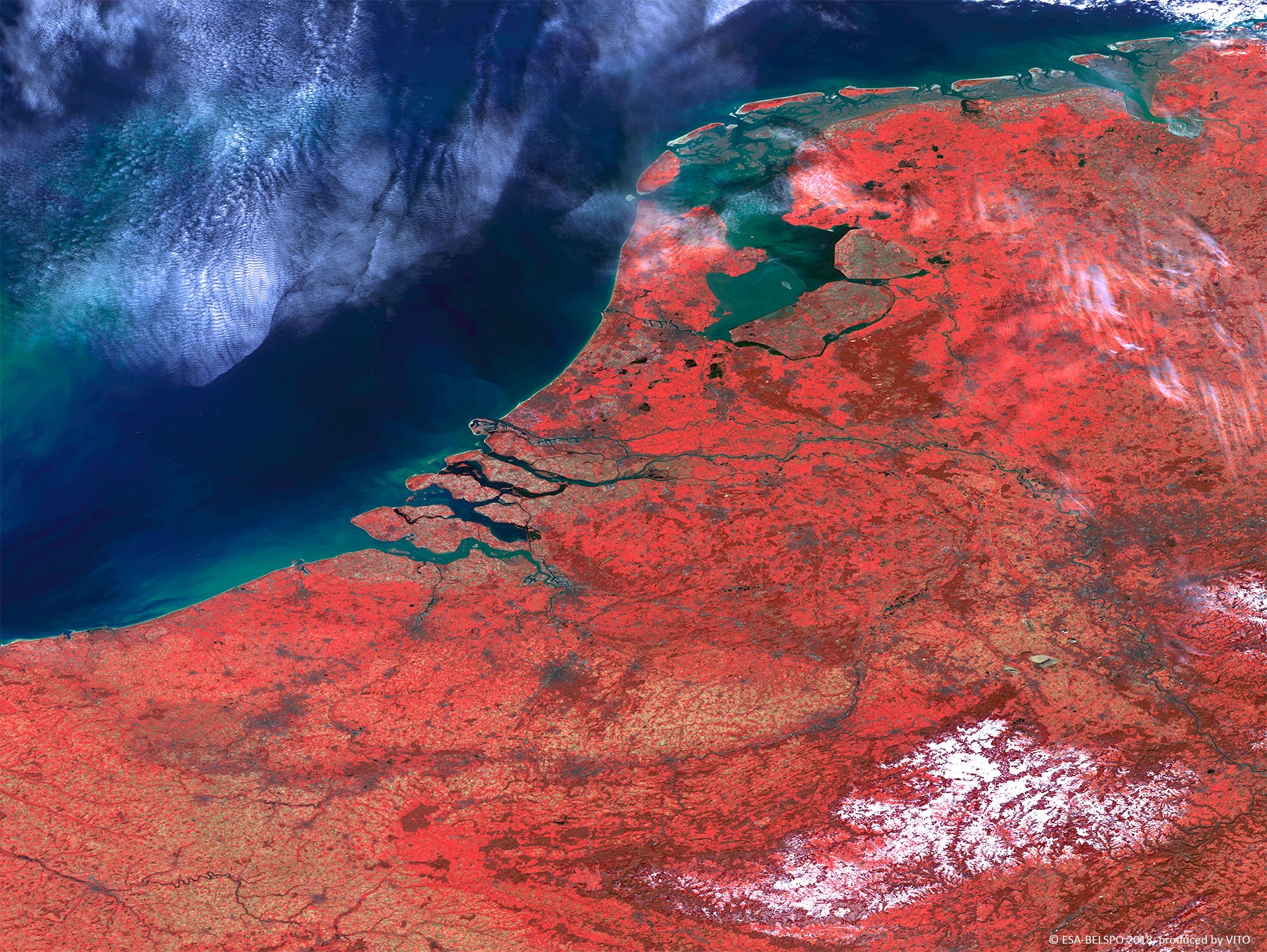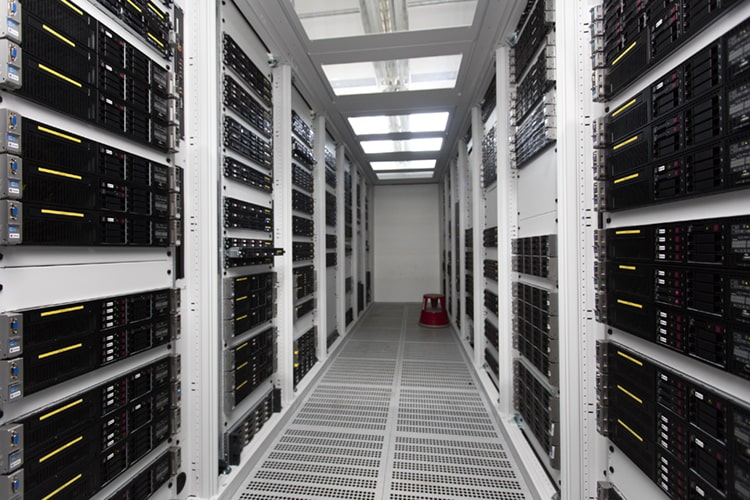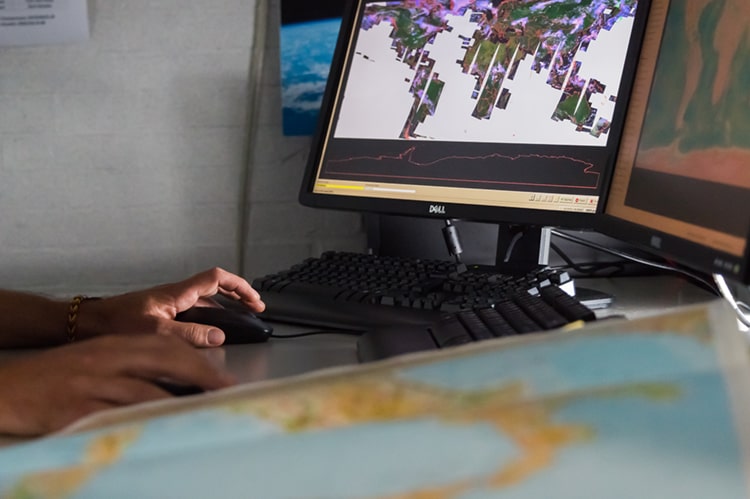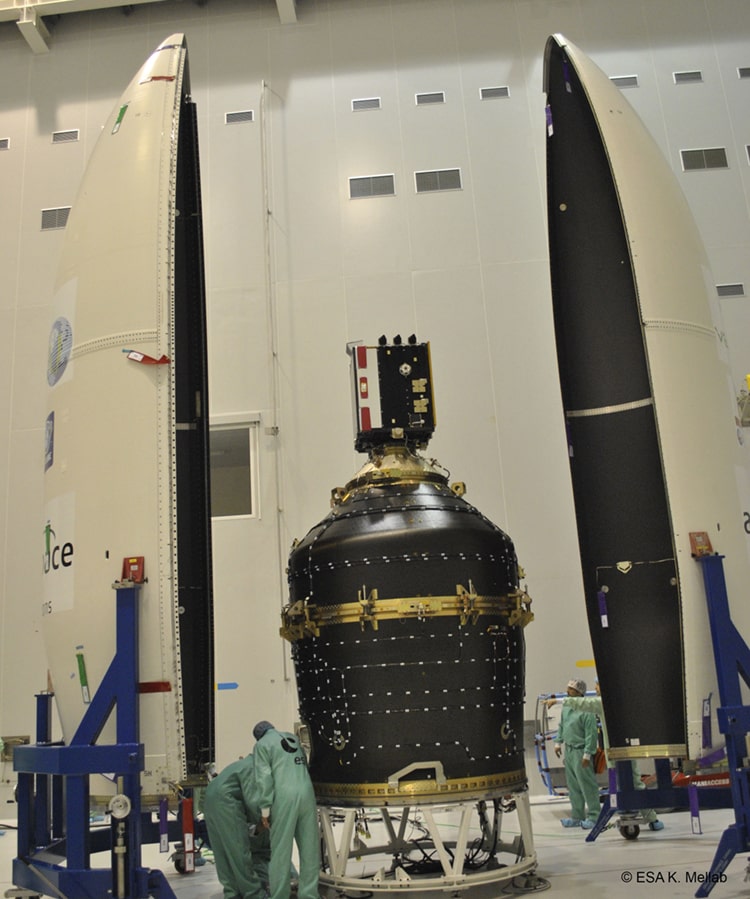"It is often said that the second spacecraft a company builds is the hardest. In this case the third one, being PROBA-V, is competing with the second one (PROBA-2) for being most challenging. It already started with the name, PROBA-V, leaving a lot of people wondering what ever happened to PROBA-4 while the V actually stand for VEGETATION. PROBA-V also became the first of its kind to step out of the technology demonstration background and entering into the operational missions arena. One of the beauties of a PROBA-like project is that it involves relatively small teams on all sides working together in an integrated and cooperative way to achieve a common goal. This ranges from customer to systems integrator, instrument manufacturer up to the end user and scientific community.
Prior to the launch the main focus is on getting the space and ground segment tested and calibrated to see that it will fulfil its needs once in orbit. But the launch itself is always the most exciting moment. Preparing the satellite in a remote location and putting it on top of the launcher is a stage in the project which remains the most memorable and puts the team spirit to the ultimate test. During the launch you think of so many things that could go wrong when it’s actually all out of your hands. You can image the relief when a first signal is received and all experts confirm we have a healthy spacecraft in orbit.
After that it’s just waiting to receive the first image so that the ultimate goal can be confirmed! We have a healthy and functional instrument in orbit providing us the data we need. It allowed VITO to complete the tests of their ground segment and set the way for a successful operational mission.
Although our contribution diminished after the handover from development to operations, we still remained involved to provide support in investigating and solving anomalies when they popped-up and expanding image acquisitions and calibrations based on interests.
In the meantime other PROBA like missions are under development at QinetiQ Space which still use the heritage and experience gained from earlier missions. PROBA-V has been an important building block in that development, helping to make this type of platform becoming mature and a valuable addition to the Earth observing satellites."




